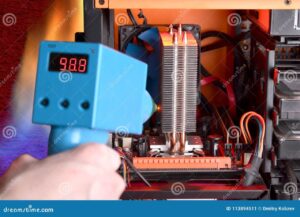Tips for Maintaining and Cleaning Your Hardware sets the stage for this enthralling narrative, offering readers invaluable insights into the essential practices that keep your devices in top-notch condition. Regular maintenance and cleaning not only enhance the performance of your hardware but also extend its lifespan, ensuring you get the most out of your investment. From understanding the importance of routine checks to utilizing the right tools for cleaning, this guide will navigate through the necessary steps you need to take for optimal hardware care.
In today’s fast-paced world, the importance of effective communication cannot be understated. Whether in a professional setting or casual interactions, the way we convey our thoughts has a significant impact on our relationships and outcomes. This article delves into the various dimensions of communication, exploring its types, significance, barriers, and tips for improvement.### Understanding CommunicationCommunication is the process of exchanging information, ideas, feelings, and meanings between individuals.
It involves a sender, a message, a medium, and a receiver. The sender encodes the message, which is then transmitted through a chosen medium—be it spoken words, written text, or even non-verbal cues like body language. The receiver decodes the message, interpreting it based on their own perceptions and experiences.#### Types of Communication
1. Verbal Communication
This includes both spoken and written forms. In verbal communication, clarity and tone play crucial roles. Choosing the right words and maintaining an appropriate tone can significantly affect the message’s reception.
2. Non-verbal Communication
Often referred to as body language, this form of communication includes gestures, facial expressions, posture, and eye contact. Non-verbal cues can sometimes convey more than words, emphasizing emotions and intentions.
3. Visual Communication
This type involves using visual elements to convey information. Charts, graphs, images, and videos can enhance understanding and retention of information, making them powerful tools in both education and business.
4. Listening
Effective communication is not just about speaking; it also involves active listening. This means fully concentrating on what is being said, understanding the message, and responding thoughtfully. Good listeners foster better relationships and facilitate clearer exchanges.### The Significance of Effective CommunicationEffective communication is foundational in all walks of life. Here are a few reasons why it holds such importance:
Building Relationships
Good communication fosters trust and respect between individuals. Whether in personal relationships or professional settings, clear and open lines of communication can strengthen bonds and create positive interactions.
Facilitating Collaboration
In teamwork, effective communication ensures that all members are on the same page, understand their roles, and can share ideas freely. This leads to more innovative solutions and a more cohesive work environment.
Resolving Conflicts
Conflicts are inevitable, but how we communicate during disagreements can influence the outcome. Approaching conflicts with clarity and respect can lead to effective resolutions and strengthened relationships.
Enhancing Productivity
In a business context, clear communication can improve workflows and reduce misunderstandings. When everyone understands their tasks and can express concerns or ideas, overall productivity increases.### Barriers to Effective CommunicationDespite its importance, several barriers can hinder effective communication:

Language Differences
In diverse workplaces, language barriers can lead to misunderstandings. It’s crucial to be aware of linguistic nuances and cultural contexts.
Emotional Barriers
Emotions like anger, fear, or anxiety can cloud judgment and distort the message. Being mindful of our emotions and those of others can help mitigate these barriers.
Physical Barriers
Environmental factors such as noise, distance, or even technology issues can disrupt communication. Finding a conducive environment for discussions can enhance clarity.
Perceptual Barriers
Each individual has a unique perspective shaped by their experiences. Misinterpretations can occur if the sender and receiver perceive the message differently. Open-mindedness and clarification can bridge these gaps.### Tips for Improving Communication SkillsImproving communication skills is a lifelong journey. Here are some tips to enhance your effectiveness:
1. Practice Active Listening
Focus on understanding rather than just responding. Nod, maintain eye contact, and provide feedback to show that you are engaged.
2. Be Clear and Concise
Avoid jargon and complicated language. Aim to convey your message in a straightforward manner, ensuring it is easy to understand.
3. Non-verbal Cues Matter
Pay attention to your body language and that of others. Ensure that your non-verbal signals align with your verbal message to avoid confusion.
4. Ask for Feedback
Encourage others to provide feedback on your communication style. This can help you identify areas for improvement and enhance your effectiveness.
5. Continuous Learning
Attend workshops, read books, or engage in courses focused on communication skills. The more you learn, the better you can adapt to different communication scenarios.
6. Stay Open-Minded
Embrace different perspectives and ideas. Being open to others’ viewpoints can enrich conversations and lead to deeper understanding.
7. Adjust Your Communication Style
Tailor your communication to your audience. Understand their preferences and adjust your tone, language, and style accordingly.### ConclusionIn conclusion, effective communication is a vital skill that impacts every aspect of our lives. Understanding its various forms, recognizing the barriers, and continuously striving to improve can lead to more meaningful interactions and successful relationships. Whether in a personal or professional context, prioritizing clear communication can transform how we connect with others, ultimately enriching our interactions and enhancing our effectiveness in all endeavors.



